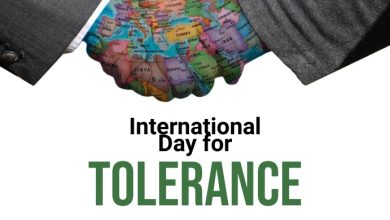 The July 19th Resolution adopted by the Kashmiri leadership in 1947 was a significant event in the history of Jammu and Kashmir. On this day, the All Jammu and Kashmir Muslim Conference, passed a historic resolution seeking Kashmir’s accession to Pakistan in view of its existing religious, geographical, cultural and economic proximity to Pakistan and in accordance with the aspirations of the majority population of the state.
The July 19th Resolution adopted by the Kashmiri leadership in 1947 was a significant event in the history of Jammu and Kashmir. On this day, the All Jammu and Kashmir Muslim Conference, passed a historic resolution seeking Kashmir’s accession to Pakistan in view of its existing religious, geographical, cultural and economic proximity to Pakistan and in accordance with the aspirations of the majority population of the state.
The development took place at a time when the subcontinent was at the threshold of a monumental change – the change that immensely altered the region’s history as well as its geography. The promulgation of Independence act by the British government same year had created a new geopolitical reality, making Kashmir’s accession to Pakistan a pragmatic choice.
It was the first formal statement from a party that represented the wishes and sentiments of nearly 80% of the state’s population while asserting and affirming their inherent right to determine its political future. The event also marks a key moment in the state’s journey towards eventual accession to Pakistan besides shaping its political trajectory and its relationship with Pakistan. The Resolution favouring Kashmir’s accession to Pakistan has a long legacy, which continues to influence the Kashmiris’ ongoing struggle against India.
So-called liberals and secularists criticized the move terming it biased, however, history proved it beyond any reasonable doubt that the decision was not solely driven by the religious considerations but also by political, economic, and cultural factors.
The main objectives of the “Äccession to Pakistan Resolution” were to protect the interests of the majority population and safeguard its political, economic, and cultural interests. Many historians viewed it (this resolution) as a reflection of the Kashmiris’ earnest desire to protect the future of coming generations. It is worth recalling here that the Kashmiri Muslims, which had seen the worst type of exploitations and oppression during Dogra rule, was highly conscious about their political future. A rebellion against the despotic rule had already started in north western areas of the state and the Kashmiris were ostensibly fighting for their rights as subjects of the Maharaja.
On the other hand, the growing nexus between Maharaja Hari Singh and the leadership of Indian National Congress led to heightened tensions and fear amongst Muslim community. The Kashmiri leadership perceived Indian influence on Maharaja as a grave threat to the politically marginalized community of the state. Apart from fear of Hindu domination, they worried that India would exploit Kashmir’s resources and economy, perpetuating poverty and underdevelopment. They also feared that joining India would lead to cultural assimilation, erosion of Kashmir’s unique cultural identity and Islamic values. These concerns and apprehensions together led the Muslim Conference leadership to adopt the 19th July Resolution, seeking to protect and secure a better political future for the people of Kashmir by acceding to Pakistan.
Today, the Kashmiri leadership’s apprehensions and concerns about India stand vindicated by subsequent events. India has always treated Kashmir as its colony. The region’s history and its relationship with India has been marked by:
1. Erasure of Autonomy: Article 370, which granted special status to Jammu and Kashmir, was gradually eroded, and eventually revoked in 2019, reducing the state’s autonomy.
2. Political Repression: Kashmiri politicians and activists have faced repression, imprisonment, and even disappearance, curbing their ability to represent their people.
3. Human Rights Violations: The Indian military and paramilitary forces have been accused of numerous human rights violations, including extrajudicial killings, torture, and enforced disappearances.
4. Economic Underdevelopment: Despite its natural resources, Jammu and Kashmir remains one of India’s poorest states, with high unemployment and underdevelopment.
5. Cultural Assimilation: Kashmir’s unique cultural identity has faced erosion due to Indian cultural and economic dominance.
6. Demographic Changes: The revocation of Article 370 has led to fears of demographic changes, as Indians from outside the state can now purchase land and settle in Kashmir.
7. Military Presence: Indian forces maintain a significant presence in Kashmir, perpetuating a sense of occupation and militarization.
These events continue to shape the political and social landscape of Jammu and Kashmir.
Moreover, the current socio-political climate in India, marked by rising xenophobia, intolerance, and communal frenzy, has led many to rethink and reevaluate the historical decision of the Kashmiri leadership that appears increasingly prescient and relevant in the face of growing Hindu nationalism, erosion of minority rights, rise of hate speech and violence, curbs on free speech and dissent, persecution of religious minorities in India.
The current situation in India has also led many critics to wonder whether the Kashmiri leadership’s apprehensions about Hindu domination and cultural assimilation were indeed justified. The revocation of Article 370, the imposition of the Citizenship Amendment Act (CAA), and the National Register of Citizens (NRC) have only reinforced these concerns.
In hindsight, the 19th July Resolution appears as a testament to the Kashmiri leadership’s vision and commitment to protecting their people’s interests, even in the face of overwhelming odds.
Tail Piece: The Kashmiris’ liberation struggle against India, which continues to draw inspiration from this political testament, has been going on since the past several decades. The people of the region have fought a long battle against India’s illegal occupation of their motherland. They have been bruised and brutalized, tormented both physically and emotionally but never defeated. Nothing short of total freedom from Indian bondage could satisfy their aspirations. The time is not far off when the chapter of India’s imperial presence in the region comes to an end and Kashmiris will finally achieve the long cherished goal their forefather had dreamed of 76 years ago.
Author Nisar Ahmed Thakur is Director media and communications KIIR and can be reached at @nissarat








